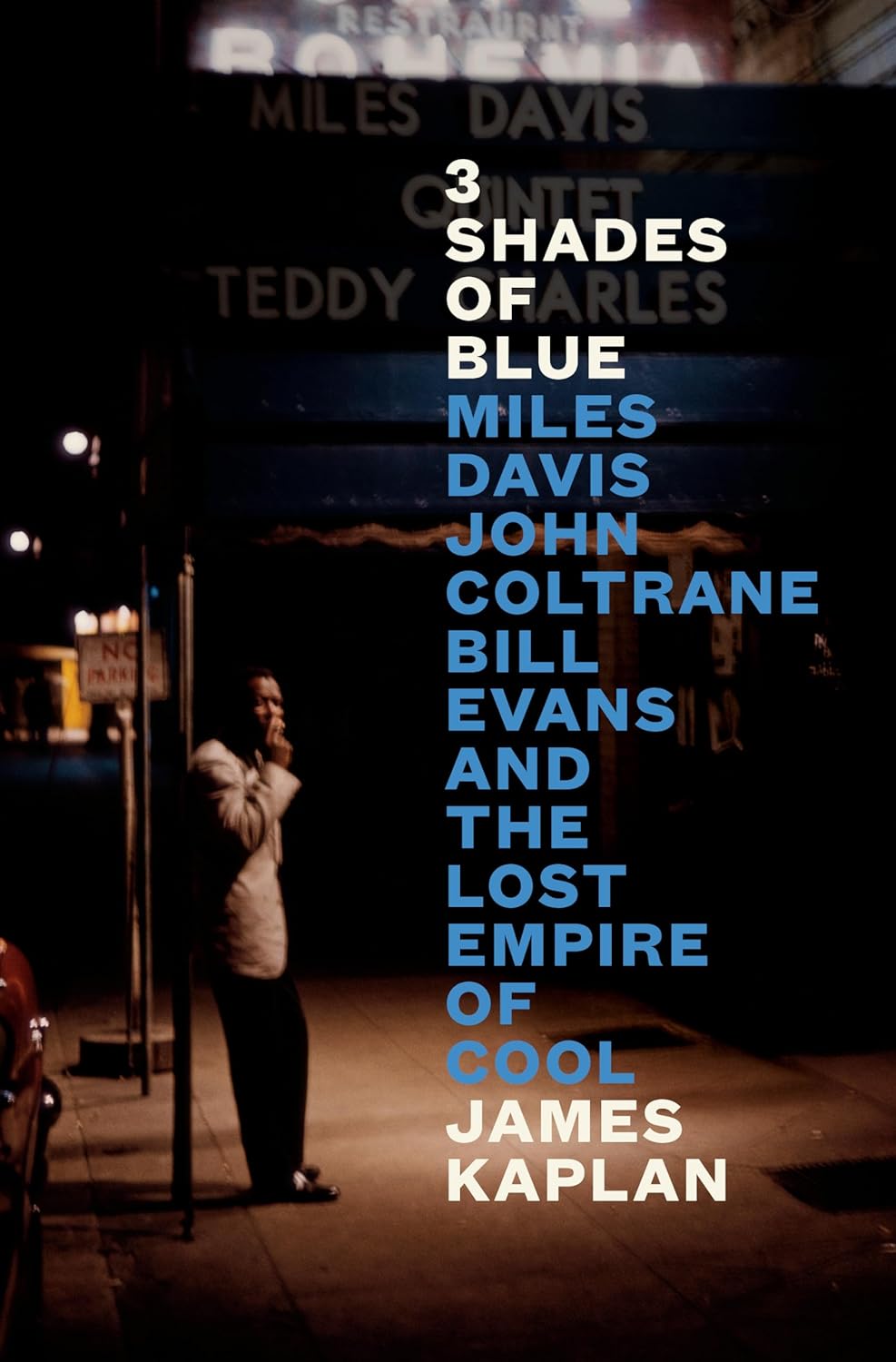Miles Davis, John Coltrane, Bill Evans, and the Lost Empire of Cool
James Kaplan
Penguin Books ($20)
Early on in 3 Shades of Blue: Miles Davis, John Coltrane, Bill Evans, and the Lost Empire of Cool, author James Kaplan mentions how disaffected jazz fans journeyed into New York City to rub elbows with the likes of “painters Willem De Kooning, Joan Mitchell, and Mark Rothko; the writers Jack Kerouac, Allen Ginsberg, and Frank O’Hara; and the young jazz titans Miles Davis, John Coltrane, and Bill Evans” at the Five Spot Café while listening to performers who would change the course of jazz music. Kaplan brings this milieu to life in his new triple biography of Davis, Coltrane, and Evans. From Manhattan and its legendary venues such as the Village Vanguard and Birdland to the sleepier suburb of Dix Hills on Long Island, where John Coltrane lived and created his late masterworks, it’s all here.
Kaplan begins with the backstory of Miles Davis, a dentist’s son from East St. Louis. Davis dropped out of Juilliard after a year there and began the peripatetic life of a jazz musician in New York City, which included traveling and performing with Charlie Parker. This lifestyle lent itself to an immersion in a culture rife with heroin and alcohol; early in his career, Davis retreated to his father’s farm outside St. Louis, where he began a painful withdrawal from heroin, only to relapse. Davis eventually kicked his heroin addiction—only to replace it later with a devotion to pain killers, cocaine, and alcohol.
John Coltrane also battled heroin addiction for much of his adult life as he pursued a musical quest for perfection, which culminated in 1965 with the best-selling album A Love Supreme, which outsold even 1961’s popular My Favorite Things. That previous album includes Coltrane’s signature single based on the Richard Rodgers and Oscar Hammerstein tune, which fans clamored to hear to the extent he wearied of playing it—but this weariness led to the soaring achievement of A Love Supreme and the road to free jazz, which Coltrane embraced and began to fuel by taking LSD.
Pianist Bill Evans, the only white member of the Miles Davis sextet, at first imbibed in heroin to fit in with the culture of jazz musicians; Evans’s fall to this temptation brought consternation from Davis, who knew the difficulties that would ensue. Evans, originally from Plainfield, New Jersey, remained fully aware that New York City was the center of jazz in America, boasting Columbia Records and a bounty of famed jazz clubs that supported musicians who played in the city before they returned to the road and endless touring.
All three musicians were military veterans; Davis and Evans were classically trained musicians as well. Coltrane, too, took advantage of the GI Bill after a stint in the Navy and studied at the Granoff School of Music in Philadelphia, where his family had relocated from North Carolina, and which enjoyed a bustling jazz scene of its own.
As one might guess from the title, 3 Shades of Blue builds to the creation of Miles Davis’s seminal 1959 album Kind of Blue. Kaplan offers abundant detail on this masterpiece of modal jazz and the inspiration it drew from both the solos of bebop musicians and the classical compositions of Ravel. Davis’s idea of freeing musicians from the jazz standards of the day was bolstered by the knowledge of Evans, who composed the album’s “Blue in Green” (the royalties for which Davis claimed; later, when Evans argued they should be his, Davis wrote him a check for $25).
Kaplan’s book seems to lull after the creation of Kind of Blue, though he rounds out the three biographies of the stars and presents the pressures that challenged jazz, including the Beatles’ appearance on The Ed Sullivan Show in 1964. Evans kicked his heroin addiction to settle down with his wife and child in New Jersey, but eventually returned to drugs (this time cocaine) and toured Europe, where his music and performances brought reverence from rapt fans. He died in New York in 1980 at age fifty-one. (John Coltrane sadly died of liver cancer in 1967, only forty years old.) Davis’s life had more tumult, including incarcerations, narcotic use, and suffering a police beating outside a New York jazz club for not moving along; he also endured several hip surgeries and constant physical pain, which he numbed with alcohol and cocaine. Kaplan notes matter-of-factly that Davis mistreated four wives, including the young fashion model Betty Mabry and, later, Cecily Tyson, but he refrains from judging Davis—instead focusing on how he nurtured Coltrane and Evans under his wing, freeing them to pursue their own musical journeys even as he helped to create jazz fusion. A better book on this jazz triumvirate seems impossible; Kaplan brilliantly relates a vital chapter of the history of jazz in 3 Shades of Blue.
Click below to purchase this book through Bookshop and support your local independent bookstore:
Rain Taxi Online Edition Fall 2025 | © Rain Taxi, Inc. 2025

